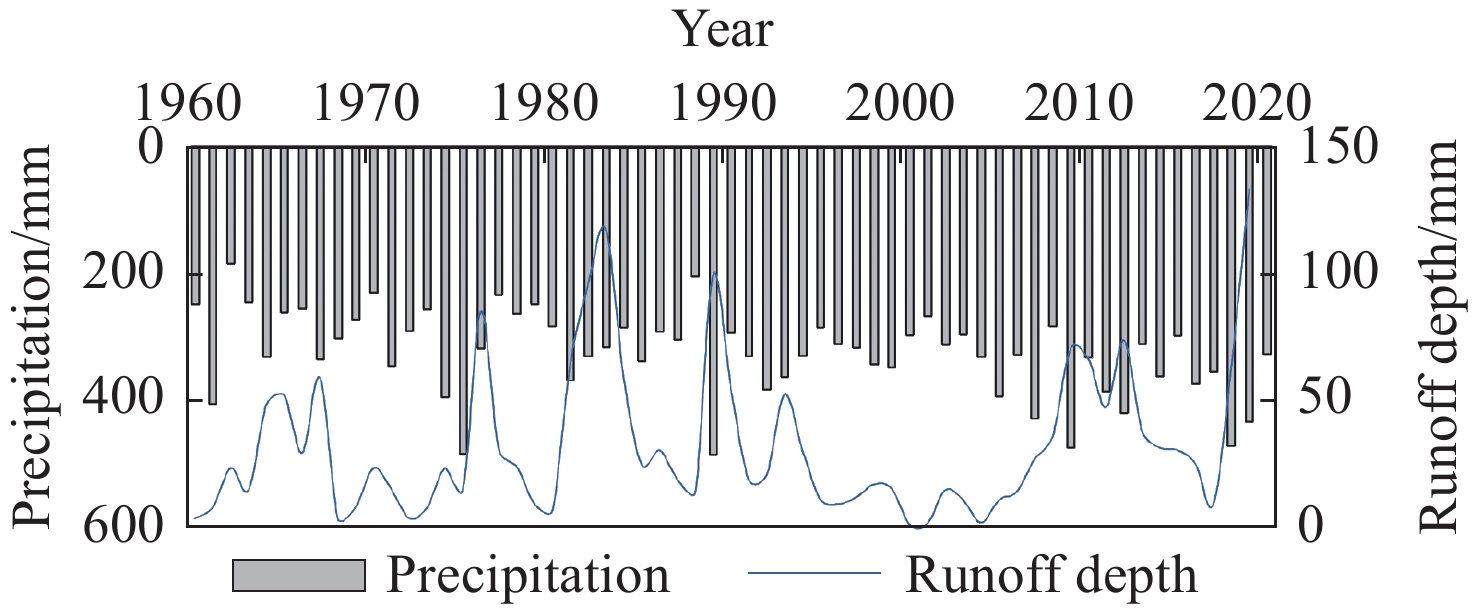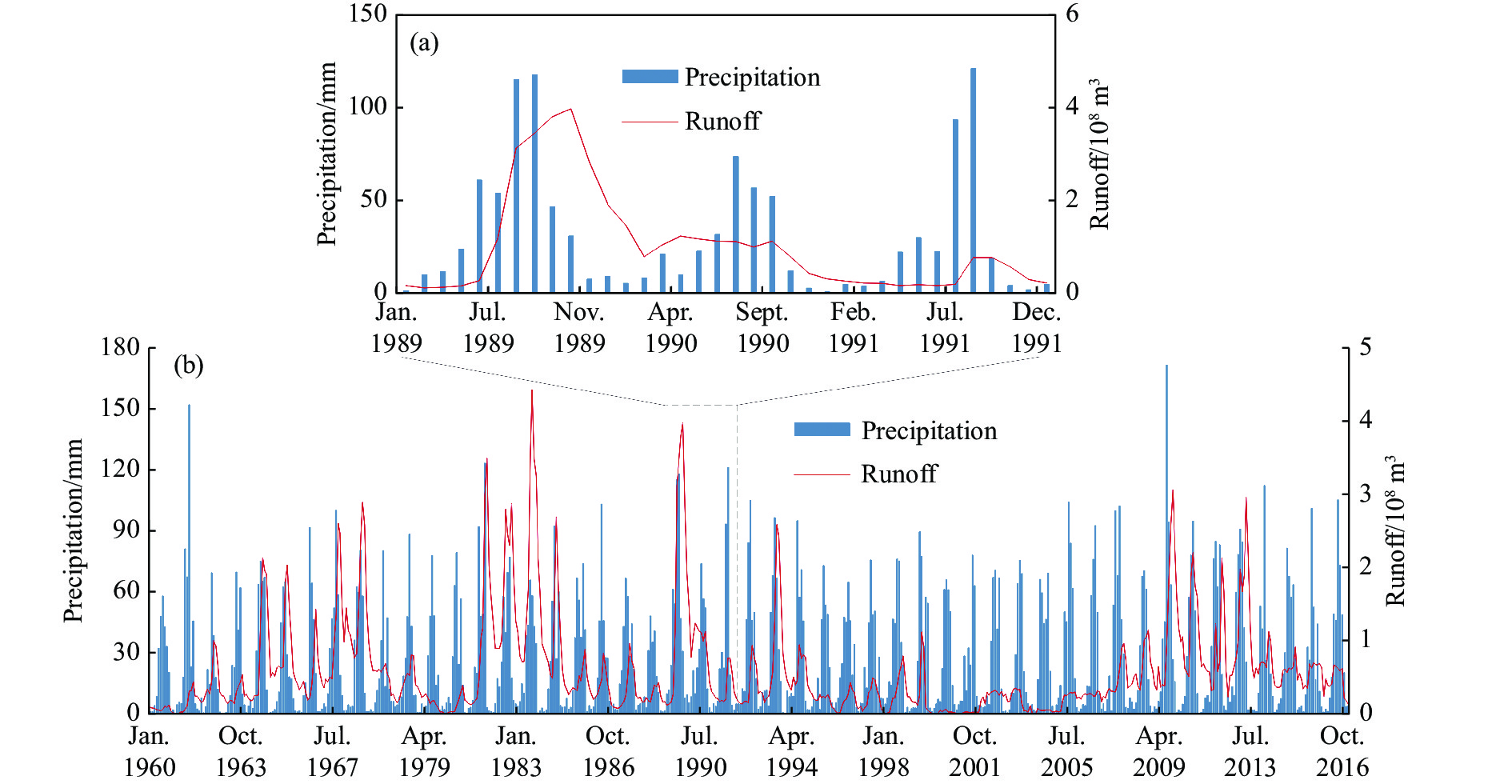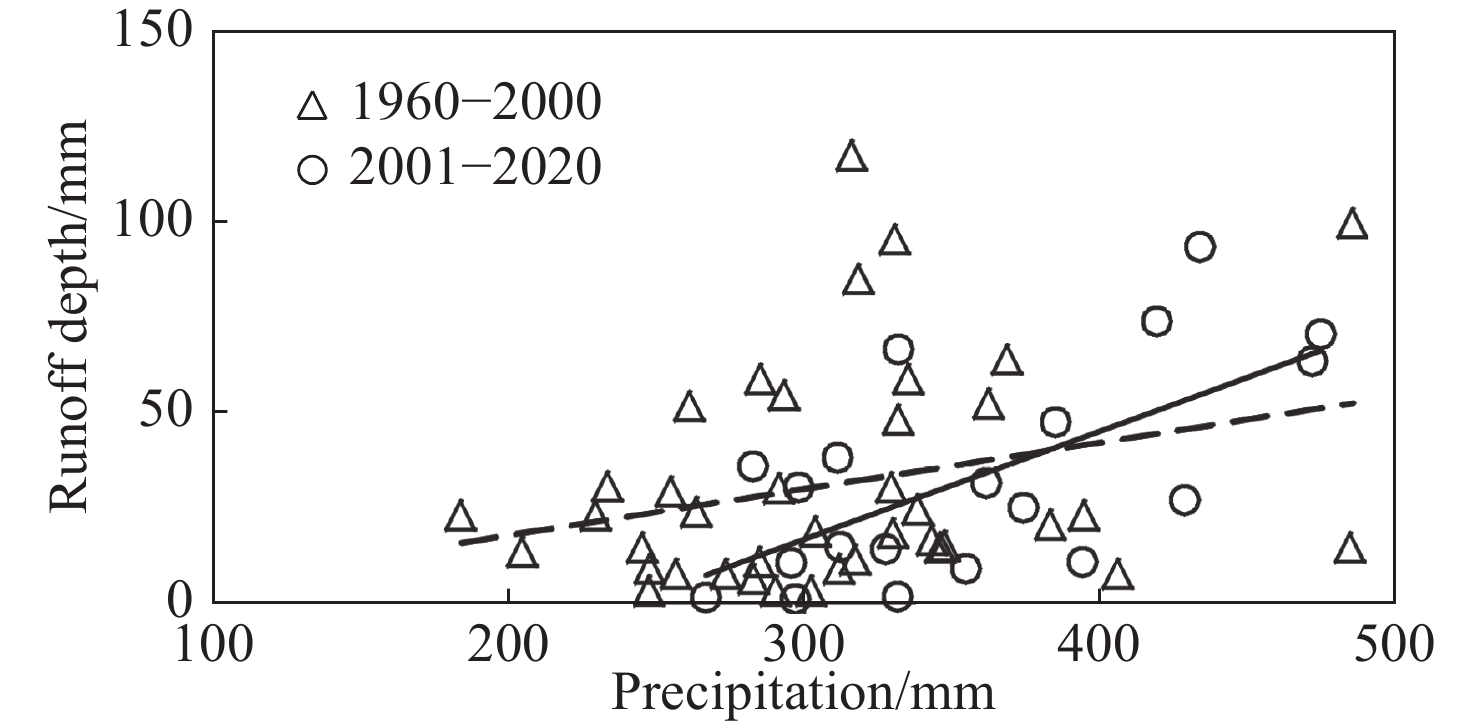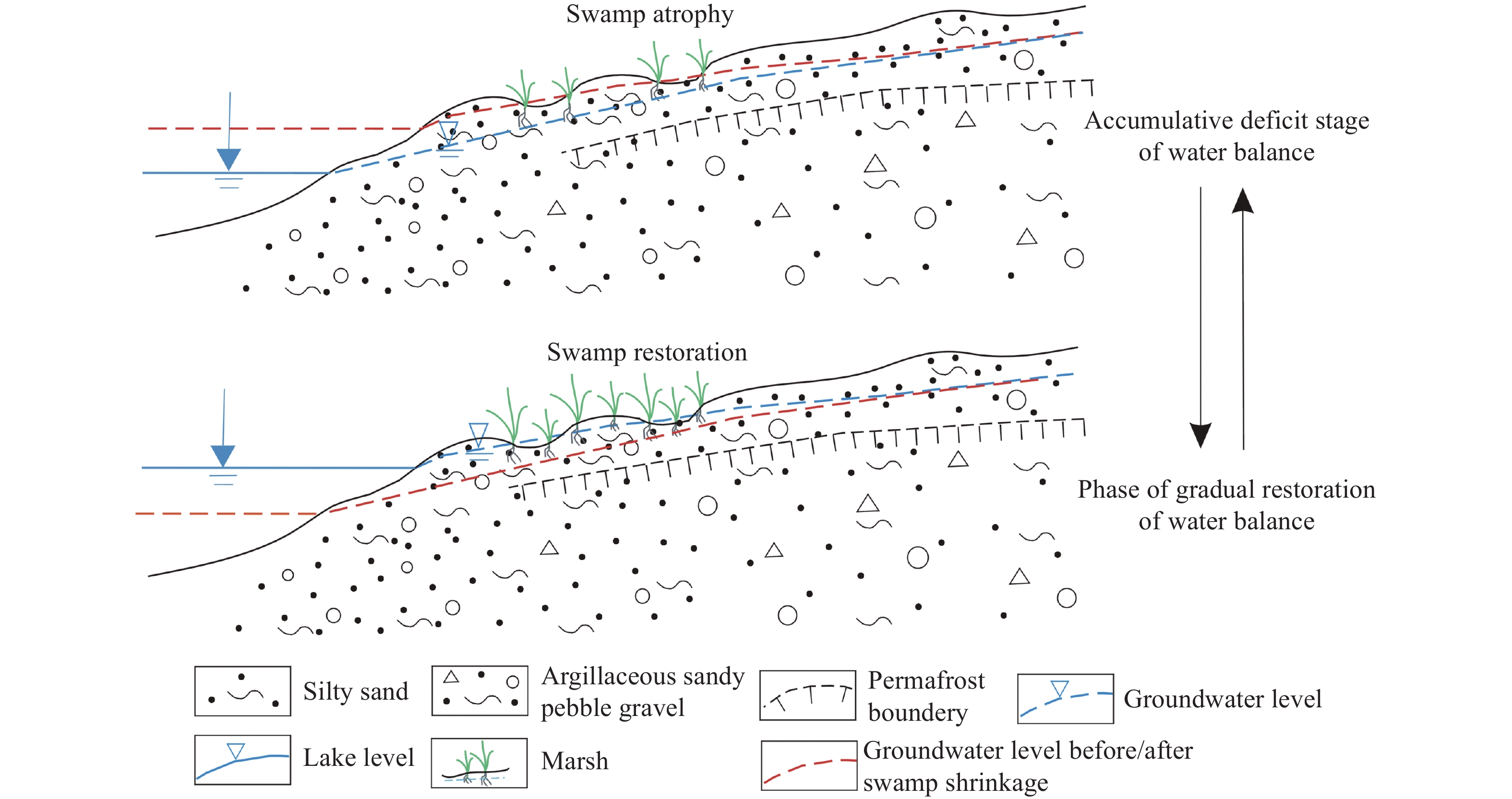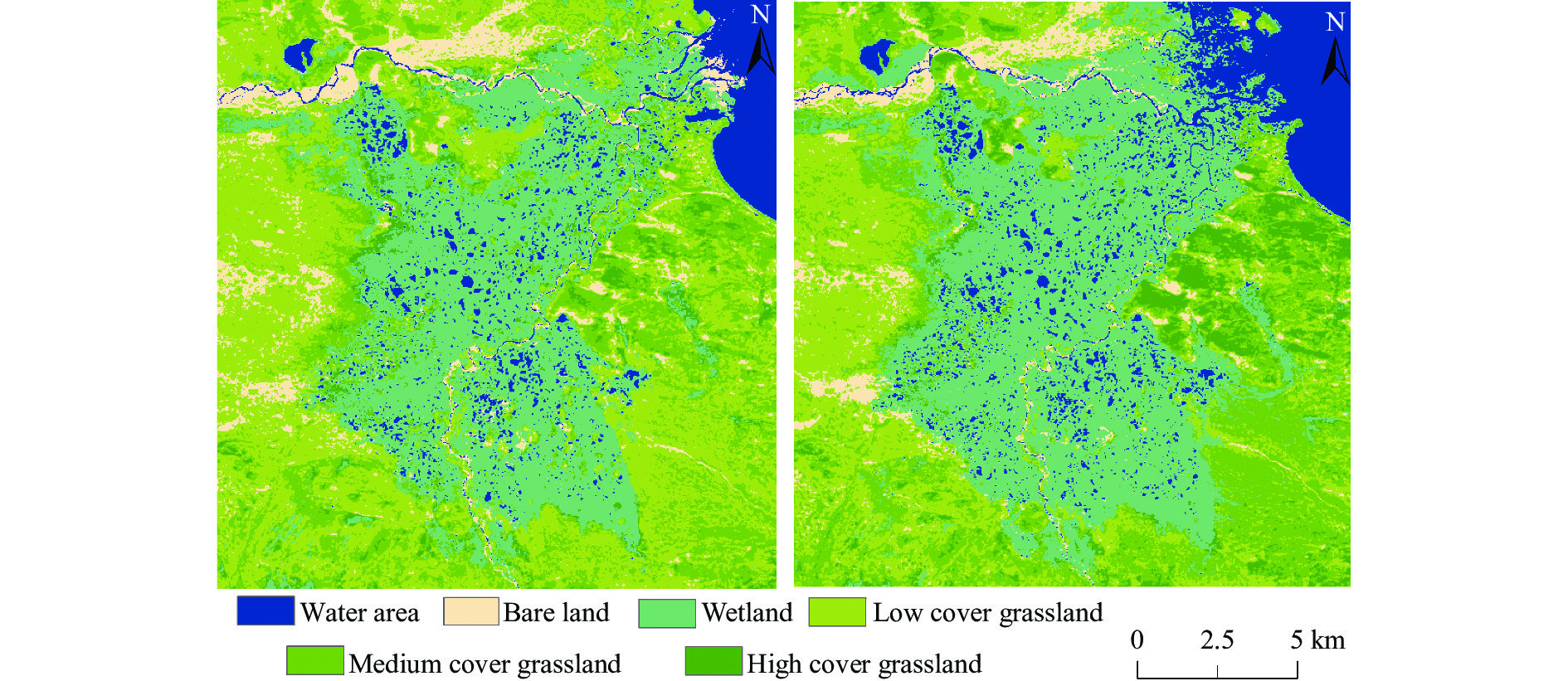| Citation: | Yang Ming-nan, Zhu Liang, Liu Jing-tao, Zhang Yu-xi, Zhou Bing. 2023. Influence of water conservancy project on runoff in the source region of the Yellow River and wetland changes in the Lakeside Zone, China. Journal of Groundwater Science and Engineering, 11(4): 333-346. doi: 10.26599/JGSE.2023.9280027 |
Influence of water conservancy project on runoff in the source region of the Yellow River and wetland changes in the Lakeside Zone, China
-
Abstract
The source area of the Yellow River (SAYR), located above the Huangheyan hydrological station, is important for ecological preservation and water source conservation in the Yellow River Basin. In this area, the impact of water conservation projects on the hydrology and the ecological environment is pivotal in protecting water resources and alpine vegetation ecosystems. This study investigates the impact of the Yellow River Source Hydropower Station on the runoff and ecological evolution of the SAYR, along with the underlying mechanism, using extensive datasets encompassing long-term meteorological, hydrological and remote sensing data from various time periods. Results show that, over the long term, precipitation is the primary factor driving runoff variations in the SAYR. Nevertheless, from 1990 to 2020, there is a notably inconsistent relationship between precipitation and runoff. After the completion of the Yellow River Source Hydropower Station in 2001, the water level of Eling Lake experienced and elevation of 2–3 m, leading to a gradual recovery of runoff. In addition, the basin's water balance shifted from a negative to a positive equilibrium, oscillating with changes in lake water levels. Consequently, the overflow zone of the Tangchama alluvial–proluvial fan in the upper reaches of the lakeshore shifted by 500 m, and marsh wetlands expanded by 20.78 km2. The increased storage of lakes and groundwater in the SAYR is the key controlling factor for the runoff recovery, changes in the basin's water balance, and enhancements in lakeshore vegetation ecology. Under the geological background of the Qinghai–Xizang Plateau's upliftment and intensified upstream river erosion, the basin experienced a substantial water imbalance due to declining discharge base levels, which is the most critical factor behind runoff attenuation in the SAYR towards the end of the 20th century. The construction of the hydropower station objectively raised the drainage base level of the basin, thereby positively contributing to the preservation of water balance, runoff stability, and the enhancement of swamps and wetlands along the lakeshore.
-
Keywords:
- Groundwater /
- Discharge baseline /
- Wetland ecology /
- Runoff /
- Climate change
-

-
References
Cao W, Sheng Y, Wu JC, et al. 2021. Soil hydrological process and migration mode influenced by the freeze-thaw process in the activity layer of permafrost regions in Qinghai-Xizang Plateau. Cold Regions Science & Technology, 184: 103236. DOI:10.1016/j.coldregions.2021.103236. Cheng J, Tian MZ, Zhang XJ. 2007. The Yellow River in its source area captured the branches of the Yangtze River. Earth Science Frontiers, 14(1): 251−256. (in Chinese) Chen LQ, Liu CM. 2009. Changes of runoff components in the source region of the Yellow River during the second half of the twentieth century. Water International, 34(4): 497−507. DOI:10.1080/02508060903377627. Dai JC, Wang GX, Song CL, et al. 2018. Study on the law of runoff retreat in the Three-river Headwaters Rgion. Resources and Environment in the Yangtze Basin, 27(6): 1342−1350. (in Chinese) DOI:10. 11870/ cjlyzyyhj201806018. Dejonge KC, Ahmadi M, Ascough JC, et al. 2015. Sensitivity analysis of reference evapotranspiration to sensor accuracy. Computers & Electronics in Agriculture, 110(C): 176−186. DOI:10.1016/j.compag.2014.11.013. Huang TM, Pang ZH, Yang S, et al. 2020. Impact of afforestation on atmospheric recharge to groundwater in a semiarid area. Journal of Geophysical Research: Atmospheres, 125(9): 1−19. DOI:10.1029/2019JD032185. Jia LY, Hu DG, Wu HH, et al. 2017. Yellow River terrace sequences of the Gonghe–Guide section in the northeastern Qinghai–Xizang: Implications for plateau uplift. Geomorphology, 295: 323−336. DOI:10.1016/j.geomorph.2017.06.007. Jin HJ, He RX, Cheng GD, et al. 2009. Changes in frozen ground in the source area of the Yellow River on the Qinghai–Xizang Plateau, China, and their eco-environmental impacts. Environmental Research Letters, 4(4): 045206. DOI:10.1088/1748-9326/4/4/045206. Kustu MD, Fan Y, Robock A. 2010. Large-scale water cycle perturbation due to irrigation pumping in the US High Plains: A synthesis of observed streamflow changes. Journal of Hydrology, 390(3-4): 222−244. DOI:10.1016/j.jhydrol.2010.06.045. Li ZX, Feng Q, Wang QJ. 2016. Contribution from frozen soil meltwater to runoff in an in-land river basin under water scarcity by isotopic tracing in northwestern China. Global and Planetary Change, 136: 41−51. DOI:10.1016/j.gloplacha.2015.12.002. Li YF, Wang WK, Wang GQ, et al. 2021. The applicability of various potential evapotranspiration estimation methods in the headwater area of the Yellow River. Hydrogeology & Engineering Geology, 48(3): 10−19. (in Chinese) DOI:10.16030/j.cnki.issn.1000-3665.202011044. Li ZG, Lyu SH, Chen H, et al. 2021. Changes in climate and snow cover and their synergistic influence on spring runoff in the source region of the Yellow River. Science of the Total Environment, 799: 149503. DOI:10.1016/j.scitotenv.2021.149503. Li ZW, Lu HY, Hu XY. 2018. Numerical simulation of dynamic water budget in a typical peatland of Zoige Plateau based on MODFLOW and field in-situ monitoring. Advances in Water Science, 29(5): 655−666. (in Chinese) DOI:10.14042/j.cnki.32.1309.2018.05.006. Li ZW, Wang ZY, Zhang CD, et al. 2014. A study on the mechanism of wetland degradation in Ruoergai swamp. Advances in Water Science, 25(2): 172−180. (in Chinese) Liu J, Cheng YP, Zhang FE, et al. 2023. Research hotspots and trends of groundwater and ecology studies: Based on abibliometric approach. Journal of Groundwater Science and Engineering, 11(1): 20−36. DOI:10.26599/JGSE.2023.9280003. Lu ZX, Feng Q, Zou SB, et al. 2020. The heterogeneity of hydrometeorological changes during the period of 1961-2016 in the source region of the Yellow River, China. Sciences in Cold and Arid Regions, 12(2): 104−118. DOI:10.3724/SP.J.1226.2020.00104. Ma Q, Jin HJ, Victor FB, et al. 2019. Impacts of degrading permafrost on streamflow in the source area of Yellow River on the Qinghai-Xizang Plateau, China. Advances in Climate Change Research, 10(4): 225−239. DOI:10.1016/j.accre.2020.02.001. Meng FC, Su FG, Li Y, et al. 2019. Changes in terrestrial water storage during 2003–2014 and possible causes in Xizang Plateau. Journal of Geophysical Research-Atmospheres Section, 124(6): 2909−2931. DOI:10.1029/2018JD029552. Mina R, Mozhgan V, Mohammad V. 2016. Modelling evapotranspiration to increase the accuracy of the estimations based on the climatic parameters. Water Conservation Science & Engineering, 1(3): 197−207. DOI:10.1007/s41101-016-0013-z. Mo XG, Liu SX, Hu S. 2022. Co-evolution of climate-vegetation-hydrology and its mechanisms in the source region of Yellow River. Acta Geographica Sinica, 77(7): 1730−1744. (in Chinese) DOI:10.11821/dlxb202207011. Song CL, Wang GX, Mao TX, et al. 2020. Linkage between permafrost distribution and river runoff changes across the Arctic and the Xizang Plateau. Science China (Earth Sciences), 63(2): 292−302. DOI:10.1007/s11430-018-9383-6. Tesfaldet YT, Puttiwongrak A, Arpornthip T. 2020. Spatial and temporal variation of groundwater recharge in shallow aquifer in the Thepkasattri of Phuket, Thailand. Journal of Groundwater Science and Engineering, 8(1): 10−19. DOI:10.19637/j.cnki.2305-7068.2020.01.002. Tian H, Lan YC, Wen J, et al. 2015. Evidence for a recent warming and wetting in the source area of the Yellow River (SAYR) and its hydrological impacts. Journal of Geographical Sciences, 25: 643−668. DOI:10.1007/s11442-015-1194-7. Wan L, Cao WB, Zhou X, et al. 2003. Changes of the water environment in the headwater area of the Yellow River and the cause for the zero-flow of the river occurring in winter. Geological Bulletin of China, 22(7): 521−526. (in Chinese) Wan CW, Gibson JJ, Shen S, et al. 2019. Using stable isotopes paired with tritium analysis to assess thermokarst lake water balances in the Source Area of the Yellow River, northeastern Qinghai-Xizang Plateau, China. Science of the Total Environment, 689(1): 1276−1292. DOI:10.1016/j.scitotenv.2019.06.427. Wang DX, Tian SM, Jiang SQ, et al. 2020. Research progress of the evolution of runoff in the source area of the Yellow River. Yellow River, 42(9): 90−95. (in Chinese) DOI:10.3969/j.issn.1000-1379.2020.09.017. Wu AM, Hao AB, Guo HP, et al. 2020. Main progress and prospect for China's hydrogeological survey. Journal of Groundwater Science and Engineering, 8(3): 195−209. DOI:10.19637/j.cnki.2305-7068.2020.03.001. Wu HH, Wu XW, Li Y, et al. 2019. River terraces in the Gonghe- Guide section of the Yellow River: Implications for the late uplift of the northeastern margin of the Qinghai- Xizang Plateau. Acta Geologica Sinica, 93(12): 3239−3248. (in Chinese) Xu JX. 2015. Complex response of runoff–precipitation ratio to the rising air temperature: The source area of the Yellow River, China. Regional Environmental Change, 15(1): 35-43. Yang MN, Zhu L, Liu JT, et al. 2022. Changes of evapotranspiration and the causes in the Beichuan River Basin of the upper Yellow River under the influence of vegetation restoration. Journal of Water Resources and Water Engineering, 33(1): 39−45. (in Chinese) DOI:10.11705/j.issn.1672-643X.2022.01.06. Yang YZ, Wu QB, Jin HJ, et al. 2019. Delineating the hydrological processes and hydraulic connectivities under permafrost degradation on Northeastern Qinghai-Xizang Plateau, China. Journal of Hydrology, 569: 359−372. DOI:10.1016/j.jhydrol.2018.11.068. Ye H, Zhang TB, Yi GH, et al. 2018. Spatio-temporal characteristics of evapotranspiration and its relationship with climate factors in the source region of the Yellow River from 2000 to 2014. Acta Geographica Sinica, 73(11): 2117−2134. (in Chinese) DOI:10.11821/dlxb201811006. Yi P, Luo H, Chen L, et al. 2018. Evaluation of groundwater discharge into surface water by using Radon-222 in the source area of the Yellow River, Qinghai-Xizang Plateau. Journal of Environmental Radioactivity, 192: 257−266. DOI:10.1016/j.jenvrad.2018.07.003. Zhang SQ, Wang YG, Zhu H, et al. 2003. Changes in water environment and their ecologic geologic environmental effects in the headwater area of the Yellow River. Hydrogeology & Engineering Geology, 3: 11−14. (in Chinese) Zhu Y, Liu SY, Yi Y, et al. 2021. Spatio-temporal variations in terrestrial water storage and its controlling factors in the Eastern Qinghai-Xizang Plateau. Hydrology Research, 52(1): 323−338. DOI:10.2166/nh.2020.039. Zhu L, Yang MN, Liu JT, et al. 2022a. Evolution of the freeze-thaw cycles in the source region of the Yellow River under the influence of climate change and its hydrological effects. Journal of Groundwater Science and Engineering, 10(4): 322−334. DOI:10.19637/j.cnki.2305-7068.2022.04.002. Zhu L, Liu JT, Yang MN, et al. 2021. Evolutionary trend of water cycle in Beichuan River Basin of China under the influence of vegetation restoration. Journal of Groundwater Science and Engineering, 9(3): 202−211. DOI:10.19637/j.cnki.2305-7068.2021.03.003. -
Access History

-
Figure 1.
Study area
-
Figure 2.
Water storage variable anomaly change curve in the SAYR
-
Figure 3.
Variation trend of precipitation and evapotranspiration from 1960 to 2020 in the SAYR
-
Figure 4.
Relationship between precipitation and runoff from 1960 to 2020 in the SAYR
-
Figure 5.
Monthly precipitation–runoff process in Huangheyan hydrographic station
-
Figure 6.
Changes of water level and lake area in the Eling Lake
-
Figure 7.
Comparison of the relationship between precipitation and runoff production
-
Figure 8.
Precipitation frequency analysis at different water equilibrium stages
-
Figure 9.
Models of wetland evolution in lakeshore zone at different water equilibrium stages
-
Figure 10.
Comparison between 1998 (left) and 2015 (right) of Tangchama Wetland





 DownLoad:
DownLoad:


